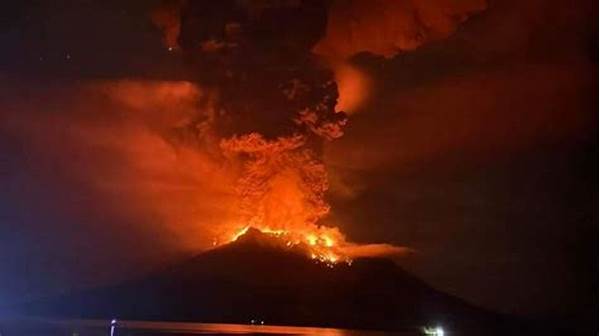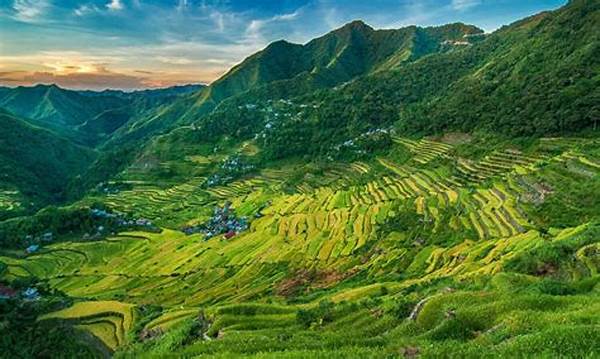Indonesia, with its stunning landscapes and vibrant culture, is a land bestowed with natural wonders, and its volcanoes are among the most intriguing features. Known as “The Ring of Fire,” this archipelago is home to more than 130 active volcanoes, making it a hotspot for seismic activity and a fertile ground for research and discovery. In a land where the earth’s crust is constantly shifting and fire meets water, one might wonder—what are the latest conditions on volcanoes in Indonesia? From fiery eruptions to serene calderas, Indonesian volcanoes capture the human imagination and offer a unique blend of danger and beauty, making them an irresistible subject for travelers, scientists, and adventure seekers alike.
Read More : Nature Tourism Terdekat From Bandung Perfect For Family Holidays 2025
Curious souls eagerly follow updates, while local communities craft tales around both feared and revered mountains. With a fine balance between education and entertainment, today’s blog unearths the latest about these majestic yet mysterious natural phenomena. Whether it’s a sprinkle of humor, a dash of suspense, or a dollop of exclusive insight, our aim is to leave you enlightened and, perhaps, tempted to embark on your own Indonesian volcano adventure. So, fasten your seatbelts as we delve into this seismic story with facts, figures, and a touch of whimsy.
The Allure and Danger of Indonesian Volcanoes
The magnetic allure of Indonesia’s volcanoes is intertwined with their inherent danger. These giant cauldrons of molten rock and ash aren’t just geographically significant; they hold emotional weight for the millions who live in their shadow. Take Mount Merapi, for example, which has erupted regularly for centuries and is one of the world’s most active volcanoes. Updates from geological agencies offer crucial data that keep local communities prepared and resilient.
But it’s not just locals and scientists who are captivated. Tourists flock to witness volcanic sunrises, feeling a blend of tranquility and adrenaline that only these natural wonders can provide. The business of volcano tourism thrives, promising experiences that are as hot as lava itself.
Recent Eruptions: A Stellar Showcase
In recent years, eruptions have showcased both the terrifying and awe-inspiring aspects of nature. Mount Sinabung in North Sumatra had been dormant for centuries but started erupting in 2010 and has continued since. The vibrant illustrations of its plumes painting the sky are not just Snapchat-worthy moments but a reminder of Earth’s ever-changing nature.
On another note, the aviation industry constantly monitors volcanic activity due to the potential ash clouds that can disrupt flights. Such events demand not only attention but swift action and adaptation—an adrenaline rush of a different kind.
Technological Innovations in Monitoring
With advanced technology, the monitoring of these fiery giants has reached an unprecedented level of accuracy. Satellite imagery and seismic sensors provide continuous data streams, and it’s like Mother Nature herself has a reality show broadcasted 24/7. These technological marvels assist with early warning systems, saving lives by predicting eruptions and evacuating people from hazardous zones.
Indonesian authorities partner with global organizations to ensure that this information is timely and accurate, preventing disasters before they happen. It is a drama that unfolds with scientific precision, leaving no stone unturned.
Living with Volcanoes: Communities and Culture
Living in proximity to such volatile neighbors has influenced the culture and lifestyle of many Indonesians. Communities develop unique traditions and rituals to honor these fiery guardians, blending reverence with practicality. From offerings to folklores, the stories passed down through generations are as rich as the soil that these volcanoes fertilize.
The Role of Mythology and Rituals
It’s fascinating how mythology and rituals provide psychological comfort to people facing a relentless natural threat. For example, Mount Agung in Bali draws both spiritual offerings and scientific curiosity. The ceremonies conducted here depict humanity’s constant endeavor to find harmony amidst chaos.
Community Preparedness and Resilience
Indonesians have turned these looming threats into a testament to human resilience. Community preparedness programs ensure that people know how to react when the Earth decides to rumble. Schools, civic organizations, and even social media play roles in spreading awareness, creating a culture of readiness and adaptability.
Detailed Analysis and Purpose of Monitoring
To fully understand the latest conditions on volcanoes in Indonesia, let’s deep dive into some statistical insights and anecdotal evidence that sketch a full image of the current landscape.
Advanced geological surveys provide important data that aid volcano monitoring. By utilizing satellite technology and seismic activity sensors, these surveys create predictive models forecasting potential eruptions. This technology acts as an invisible shield, offering real-time updates crucial for both local authorities and international agencies.
Volcanic eruptions can be a double-edged sword for economies. While the initial impact might disrupt local businesses and tourism, the enriched soil attracts agriculture, driving long-term economic benefits. Countries like Indonesia transform challenges into opportunities, showcasing their strategic planning acumen.
Local witnesses offer heartfelt testimonies, describing the sheer power and beauty witnessed during eruptions. Their stories add a human element, making statistics more relatable and resonant with audiences worldwide. “When Merapi erupts, it’s like a dragon awakening,” said one local villager, capturing imagination and heart.
Read More : Nature Travel Checklist For First-time Adventurers
Educational programs leverage the latest volcanic conditions to teach about geology, environmental science, and community resilience. Schools incorporate real-time data into their curriculum, ensuring that the next generation is more informed and prepared than the last.
Sustainability initiatives in volcanic regions emphasize the development of eco-friendly tourism and sustainable agriculture. These goals align with broader global initiatives on climate action, making Indonesia a key player in future environmental strategies.
By fusing technology, tradition, and tireless effort, Indonesia provides a forward-running case study on how societies can adapt and thrive amidst natural adversities.
Volcanoes as a Force of Nature: Facts and Figures
Incorporating the latest conditions on volcanoes in Indonesia offers fascinating insights backed by compelling statistics and observation.
According to recent studies, Indonesia is home to some of the most active volcanoes on the planet, including Mount Merapi, Mount Sinabung, and Mount Agung, each with its own eruption pattern and history.
Indonesia experiences hundreds of small volcanic events annually, with about a dozen considered significant. Moderate to severe alerts are issued regularly, providing timely warnings for evacuation if needed.
The utilization of drones and AI in monitoring provides a modern edge in tracking volcanic activity. This advanced technology aids in creating exhaustive risk assessments updated frequently, reducing human vulnerability.
Cultural practices around volcanic sites are rich and varied, aimed at appeasing the volcano spirits and ensuring peace and prosperity. These practices signify a deep respect for nature and its unpredictable temperament.
Summary: The Divine Dance of Fire and Earth
Indonesia’s unique geographical and cultural landscape is sculpted by its volcanoes. At the intersection of science and spirituality, the latest conditions on volcanoes in Indonesia reflect a harmonious balance between progress and tradition. The local communities continue to adapt, creating an inspiring narrative of endurance and evolution.
The symbiosis of natural marvel and human perseverance creates a compelling story that invites curiosity and admiration. These volcanoes are much more than mere geographical features; they are active participants in a story that is as old as time itself and as new as tomorrow’s dawn.
In conclusion, the divine dance of fire and earth, as exhibited by Indonesian volcanoes, is a tale of destruction, creation, and rebirth. It’s a story that tells itself through every plume of ash, every technological advancement, and every cultural practice, inviting us all to watch, learn, and be awed by the supreme artistry of nature.


